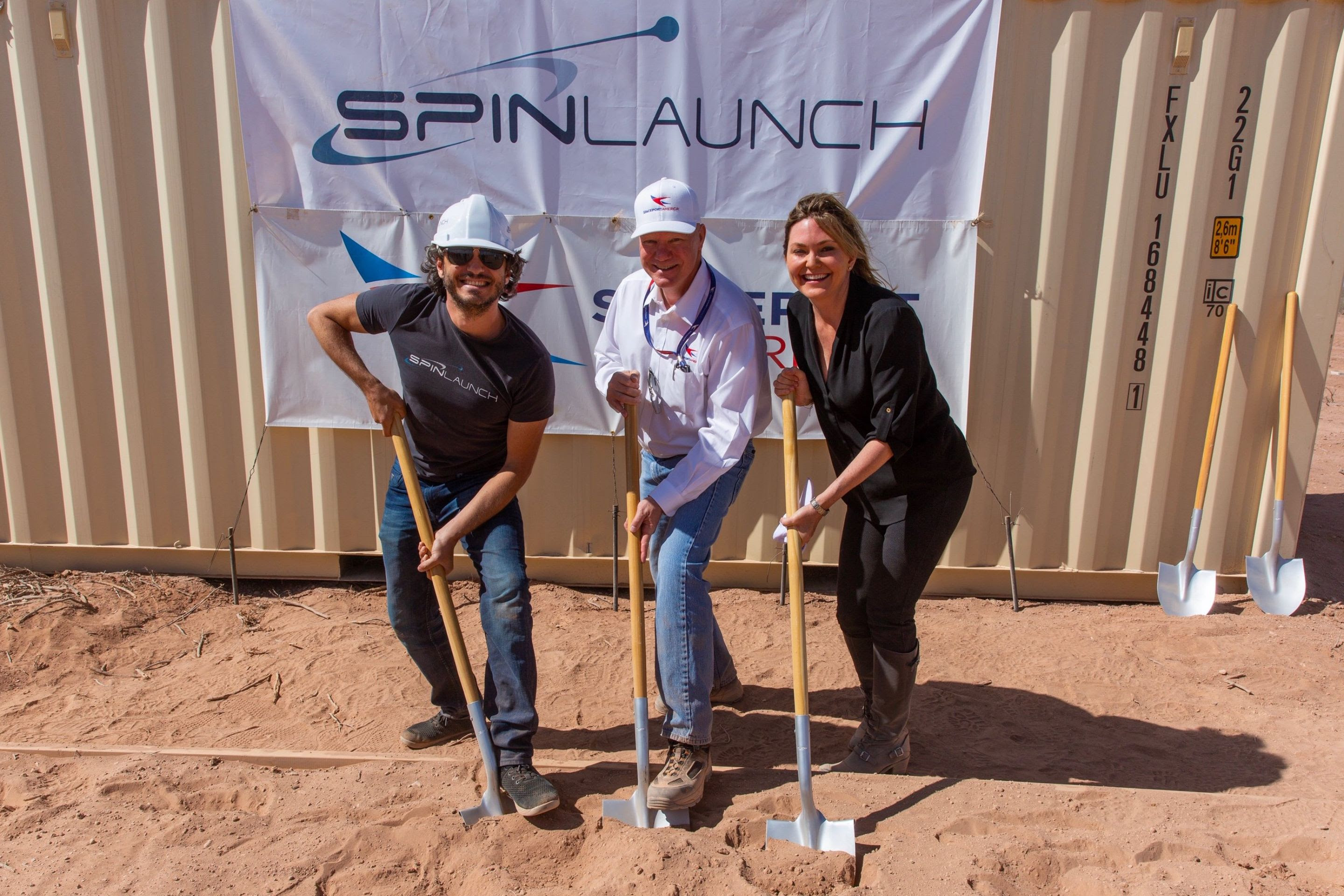Secretive Startup SpinLaunch Breaks Ground on Satellite-Flinging Test Flight Facility

SpinLaunch has begun building the facility where it will test out its radical new satellite-lofting strategy.
The company broke ground yesterday (May 7) at Spaceport America in New Mexico, marking the start of construction on a $7 million flight-test facility.
And this will be no ordinary launch pad. SpinLaunch is developing a kinetic-energy-based system that will fling small spacecraft skyward without firing up a rocket engine (though traditional chemical propulsion does come into play later in the flight).
Related: Photos: Take a Tour of Spaceport America
If all goes according to plan, SpinLaunch will eventually be able to loft satellites cheaply and rapidly — up to five times per day, at about $250,000 a pop, company representatives have said.
"SpinLaunch, with its new configuration to employ kinetic energy, is truly one of the most exciting new ventures to enter the space industry, and we are excited to be part of their growth — and in turn enable the growth of the small-satellite market," Spaceport America CEO Dan Hicks said in a statement yesterday.
Hicks attended yesterday's groundbreaking, as did SpinLaunch founder and CEO Jonathan Yaney and New Mexico Economic Development Department Secretary Alicia Keyes.
Breaking space news, the latest updates on rocket launches, skywatching events and more!
"We are excited to be developing our first flight test site at Spaceport America," Yaney said in the same statement. "The commercial space market is expected to grow to a trillion-dollar industry within the decade, and this new agreement with Spaceport America will expedite our ability to service that emerging market."
SpinLaunch has leased 10 acres (4 hectares) on the spaceport's grounds.
SpinLaunch was founded in 2014. Last year, the California-based company snagged $40 million in "Series A" investment, the financing round that follows initial "seed capital." That funding came from some heavy hitters, including Airbus Ventures, GV (formerly Google Ventures) and Kleiner Perkins.
SpinLaunch has historically been tight-lipped about its technology and its plans. Its website, for example, consists of a link to a 2018 press release about the Series A haul, two news stories related to that release, contact information and some job listings.
But this bare-bones portal is a font of information compared to the site's previous iteration, which was password-protected.
So, SpinLaunch may be coming out of stealth mode a bit. Indeed, the company attached a fact sheet to the press release highlighting yesterday's groundbreaking, providing some details not found on the company website. (This release was emailed out, or we'd link to it.)
This fact sheet lays out the envisioned launch cost and frequency, for instance, and states that SpinLaunch aims to loft its first payload by 2022. And we get the following description of the launch system:
"SpinLaunch utilizes existing technology and components from oil/gas/mining and wind turbine industries to construct an innovative mass-acceleration system, which achieves very high launch speeds without the need for enormous power generation or massive infrastructure. After ascending above the atmosphere, a relatively small, low-cost onboard rocket will be used to provide the final required velocity for orbital insertion. Because the majority of the energy required to reach orbit is sourced from ground-based electricity, as opposed to complex onboard rocket propulsion, total launch cost is reduced by an order of magnitude over existing launch systems."
Hopefully, we'll get more information as SpinLaunch advances its technology and preps for test flights. Stay tuned!
- Satellite Quiz: How Well Do You Know What's Orbiting Earth?
- Blastoff! How to See a Rocket Launch In Person This Year
- The History of Rockets
Mike Wall's book about the search for alien life, "Out There" (Grand Central Publishing, 2018; illustrated by Karl Tate), is out now. Follow him on Twitter @michaeldwall. Follow us on Twitter @Spacedotcom or Facebook.

Michael Wall is a Senior Space Writer with Space.com and joined the team in 2010. He primarily covers exoplanets, spaceflight and military space, but has been known to dabble in the space art beat. His book about the search for alien life, "Out There," was published on Nov. 13, 2018. Before becoming a science writer, Michael worked as a herpetologist and wildlife biologist. He has a Ph.D. in evolutionary biology from the University of Sydney, Australia, a bachelor's degree from the University of Arizona, and a graduate certificate in science writing from the University of California, Santa Cruz. To find out what his latest project is, you can follow Michael on Twitter.
